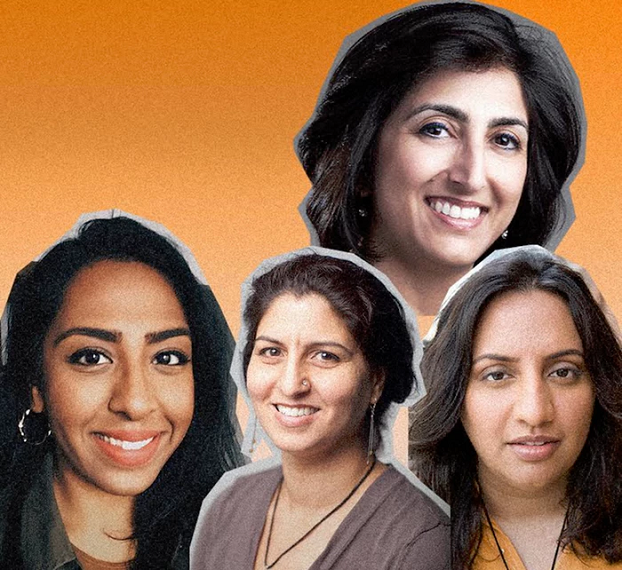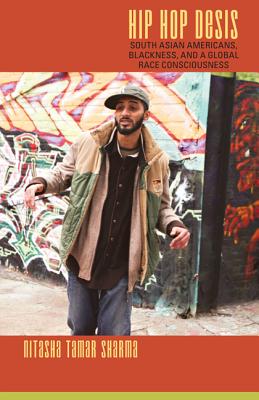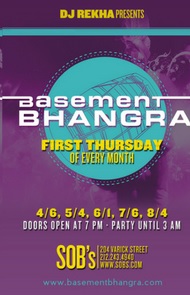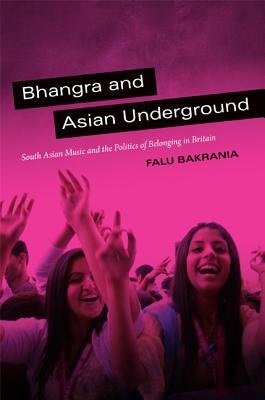
Adam Bainbridge is a British musician and producer of mixed Indian and English heritage. He recently won a Grammy Award for work on Solange Knowles’ A Seat at the Table and hosts a monthly show on RBMA radio, Kindness Meets, featuring in-depth interviews on music. The following conversation is a transcribed, and abridged version of a radio piece originally broadcast last December, shared on The Aerogram by permission. Follow the link at the end to read the unabridged version of the transcript at RBMA Daily.
* * *
As a continent, Asia has the largest population around 4.4 billion to Africa’s 1.2 billion, the Americas’ one billion and Europe’s 0.7 billion. And yet generally, Asian culture, beyond food and religion, hasn’t really left its mark on Western consciousness, despite massively popular music and film industries in most of the larger Asian nations.
Bollywood, K-pop and J-pop have comparable revenues to Western markets — Japan is the world’s second largest music market, and China the second largest for film, with both trailing the U.S. — and yet most Western audiences are unaware of superstars like SRK, Ayumi Hamasaki and Feng Xiaogang. In the U.S., Asian people comprise around 5.6 percent of the population, and yet as music makers, Asian people in America are all but invisible. As a mixed-race British Asian and a musician, I wanted to explore why Desis are often working on the sidelines in the music industry, if they’re present at all.
If music is an ideal form of expression, and if all minorities live in a country framed by the desires and structures of a white majority, why wouldn’t Asian American kids take to music to protest, to celebrate, to react, to be visible? To what extent do South Asians align themselves with other minorities, specifically with black artists? Do South Asians in Western music industries rely too much on a template of success based around black entrepreneurship and artistry? Or do some Asians prefer to align with white music cultures, often in response to cultural pressures from within their own familes?
Many of the answers to these questions can be found in the discussion below, excerpted from a recent episode of my recurring show on RBMA Radio that featured four women: Nitasha Tamar Sharma, author of Hip Hop Desis: South Asian Americans, Blackness, and a Global Race Consciousness; DJ Rekha, a London-born producer, curator, DJ and activist credited with bringing bhangra music to the US; Anupa Mistry, journalist and writer currently at The FADER; and Falu Bakrania, author of Bhangra and Asian Underground: South Asian Music and the Politics of Belonging in Britain. Thanks to them all for the insights and encouragements — and for highlighting the strengths, and occasional weaknesses, of our burgeoning artistic community.
KINDNESS
Nitasha, the subjects of your book and your research is this specific cultural space that we do define as a black American culture. What did you find were the ways into hip-hop for Desi kids?
NITASHA SHARMA
My book, really, is an ethnography. I wrote an ethnography of 24 South Asian American hip-hop artists… I was really interested in the 1990s and early 2000s and looking at South Asian youth, including Pakistanis, Sri Lankans, Indians — not just Indians — who really dedicated their lives to producing hip-hop, who also dedicated their lives to living in black communities and often with black people, and who shared politics with African Americans.
 I don’t quite fit the generational mold, but youth of my generation were a lot of these artists who were born in the ’70s and ’80s and grew up in cities like Richmond, California; Berkeley, California. Some grew up in Chicago and New York. They grew up, in some cases, alongside African American and Latino peers in black neighborhoods, and so their in wasn’t that far-fetched. It’s just that in our focus on suburban middle class South Asians we miss the diversity of the South Asian American experience.
I don’t quite fit the generational mold, but youth of my generation were a lot of these artists who were born in the ’70s and ’80s and grew up in cities like Richmond, California; Berkeley, California. Some grew up in Chicago and New York. They grew up, in some cases, alongside African American and Latino peers in black neighborhoods, and so their in wasn’t that far-fetched. It’s just that in our focus on suburban middle class South Asians we miss the diversity of the South Asian American experience.
“In our focus on suburban middle class South Asians we miss the diversity of the South Asian American experience.”
A lot of South Asian artists that I talk to who are producers and engineers were raised in a more typical Desi experience. They grew up in white suburbs like San Francisco and Fremont and they felt a lot of ostracization and racism in their white schools and in their white communities. But their parents, our Desi parents, didn’t really know how to talk to us, or chose not to talk to us, about race or racism.
Their in was also generational. Hip-hop was really booming in the 1990s and 2000s and it really spoke to them, because it articulated for them the kinds of racism that they were facing. Again, I saw these two parallels. The timing was right for South Asian youth born in the ’70s and ’80s, just when hip-hop was born. For a lot of these youth, they came from the cities where this was created, and they created alongside black and Latino peers. On the other hand, for a lot of white youth the technical and other aspects appealed to them, but it gave them this vocabulary for understanding racism in America.
“Postcards from Paradise” from Chee Malabar’s Himalayan Project
KINDNESS
In your discussions with that generation of emcees and producers and musicians, to what extent was the identification with the black American culture empowering, what were the positives of that identification, and what were the potential tensions of South Asians identifying with the black culture here?
NITASHA SHARMA
I think that for some youth who grew up with black peers or who identified in white suburban schools with the other students of color — which were just a handful, right? — for them it was very empowering, because first of all the music spoke to them, it moved them. In some cases it’s true, of course, that it’s also braggadocio and the racialized masculinity that might have appealed to some of the South Asian boys-turning-men, who were looking for some sort of racialized masculinity that was not really the way South Asians had been typified stereotypically. I think the music really moved them. I think that it really gave people a solid sense that, “I’m not crazy. I’m not the only one experiencing this. This is not because I am devalued and South Asians are devalued as brown people in the U.S. with multiple stereotypes. It’s that this nation is structured economically and along a racist, exclusionary basis.”
Parents were almost universally against their children’s choices to pursue music, which was seen as devalued. Like, “We left India,” or Sri Lanka, “and this is what you’re going to do with yourself?”
What these folks did, especially later in college — they’re all college-educated — a lot of them took ethnic studies classes and South Asian history classes in the U.S. What they realized was at first they were really taken by the black power rhetoric of Public Enemy and the masculinity offered by Ice Cube and folks like that. Later, they realized they had to turn black power into brown pride. That’s when they really developed as artists and got to tell their own narratives of transnational phone calls, multilingual debates, parental expectations. I think in a lot of ways they made it their own. These are the positives, that they found an art form that really spoke to them as American people of color who are racialized, and it allowed them to express themselves in a way that they loved.
Like you said, there’s a lot of tensions that come with it. Parents were almost universally against their children’s choices to pursue music, which was seen as devalued. Like, “We left India,” or Sri Lanka, “and this is what you’re going to do with yourself?” Specifically, of course, black music, [it was] like, “Why this rap crap? What is this?” With all of its attendant anti-black, racist sentiments, that this was all about violence and misogyny and drugs, which most of the artists actually don’t rap about.
I think a lot of community questions about their authenticity, which they got in black and hip-hop circles, was like, “Why is a South Asian rapping? What do you have to rap about?” Also, from South Asian youth audiences. Sometimes they’d be asked to perform at colleges for Desi or South Asian student alliances. Desi kids would show up and be like, “I don’t want to see brown people rapping. I want to see black people rapping.” I’d say the biggest struggle has just been politically motivated artists, who are not pop artists, who are not black and who are not white, how do you make your art and have people listen to you, and how do you make a living from it? It’s been really difficult for them.
KINDNESS
Rekha, you’re British originally.
DJ REKHA
I’m poco [post colonial] diasporic. British-born, Brooklyn-based, la-dee-dah.
KINDNESS
Specific to the U.S. scene, why does the South Asian musical landscape look the way it does here at this moment in time? What are the historical reasons for the way visibility is the way it is?
DJ REKHA
Why does it look the way it does? It’s a question of how does it look to whom, which is a bigger question.
KINDNESS
I mean in terms of its relative visibility.
DJ REKHA
Are you suggesting it’s very visible or invisible?
KINDNESS
I’m saying it’s somewhere in between depending on what you know and where you’re looking for it. Compare it to visibility in the UK, for example.
DJ REKHA
It’s hard not to compare the two communities. Let’s just put it that way. Every word to describe everything is problematic, so we’ll just say “scenes.” A culture does not happen in a vacuum. The context in which music producers arose in the UK are very different than the ones here. In the United States, the pull factors for immigration are very different. The communities that immigrated here are very different.
I think a lot of what happened in the United States starts from the desire to preserve cultural tradition within the community. In the UK there’s a concentrated community of Punjabi people that have a direct lineage to that music and culture, folk music.
“In the early ’90s, was a desire to go out dancing, and dance to something South Asian, or be in a room full of brown people.”
 Growing up here there is a lot of emphasis within certain communities, especially within South Indians, on certain kinds of cultural traditions. In terms of music making, that sort of knowledge base wasn’t here. But what we needed here, I would say in the early ’90s, was a desire to go out dancing, and dance to something South Asian, or be in a room full of brown people. That gave rise to remix culture, which was taking Bollywood songs and remixing them with Latin house beats or dancehall beats or whatever, and that built this underground mix CD, mixtape scene, which was so powerful globally I think it shot back to Bollywood. They just started making their music better.
Growing up here there is a lot of emphasis within certain communities, especially within South Indians, on certain kinds of cultural traditions. In terms of music making, that sort of knowledge base wasn’t here. But what we needed here, I would say in the early ’90s, was a desire to go out dancing, and dance to something South Asian, or be in a room full of brown people. That gave rise to remix culture, which was taking Bollywood songs and remixing them with Latin house beats or dancehall beats or whatever, and that built this underground mix CD, mixtape scene, which was so powerful globally I think it shot back to Bollywood. They just started making their music better.
On the flip side, in that same situation, in New York City particularly and other metropolitan areas, we saw a group of people coming of age and desiring their own spaces. Some of those spaces began to percolate in college campuses. Eventually it bled into clubs that were rent-a-club. Holiday weekend, white people with money go to the Hamptons, these clubs are empty. Let’s give it out to groups that can’t get into these clubs on other days. Then there you go. You’ve got a space, some of the music is South Asian, some of it is not. It’s sort of a hybrid. That’s kind of how that scene emerged.
KINDNESS
Falu, as someone born in India, then living in the US, what attracted you to writing about the diaspora and music in the UK, specifically?
FALU BAKRANIA
I had come of age or was growing up at a time where the children of the mass migration of the 1960s here just started to emerge in the U.S., and I was also growing up in an area where I was pretty alienated by my environment, which was predominantly white — Orange County. As it was the South Asians were, for the most part, scattered throughout the U.S. There were certainly areas of concentration, but nothing like you had in the UK. Again, this is just the second generation coming of age, and I heard this music via my cousins, who are actually living in a part of LA that was a little bit more densely populated in terms of having a South Asian popular culture and street with a bunch of shops. They had access to this music that was coming from Britain. I heard a track and it just spoke to me.
It was “Star Megamix” from Bally Sagoo’s album Wham Bam Bhangra Remixes, that was released in 1990 in Birmingham, England. It was a really early track. It was really clever. It was remixing South Asian music with other kinds of Western popular music and sampling different kinds of lyrics and speeches from MLK, so there was an obvious political tone to this track, even though it wasn’t didactic, per se. It was really nothing like anything I’d heard before. It just sparked my imagination and stayed with me. In the course of graduate school, as I was thinking about a project, I really wanted to go to England and start finding out more about the music scene that this reflected.
KINDNESS
Anupa, the conversation that we’ve had on this show is about identity in music, but what’s it look like in music journalism, for example? Are there many other writers with South Asian roots that you’re aware of that you speak to? Is there a community?
ANUPA MISTRY
I wouldn’t say there’s a community. There are people who I’m aware of and I think we seek each other out, which is great. Like my friend Puja Patel, who is now at Rolling Stone. I’m trying to think of who else. Like, is that the only one? Is it just me and her? There are definitely younger writers who are coming up, which is great.
I do think there’s a history. When I was in college I would stream BBC Radio and I listened to Asian Network a lot. Those are the people that I was looking to as journalists who were chronicling music culture, and I guess it was specifically Asian focused, but to me it was still super cool. One of my other idols growing up was this woman Monika Deol. She hosted this dance music show that aired on MuchMusic, which was like our MTV, and the show was called Electric Circus. The concept was basically like Friday night before the club. It was all of the club hits, and they showed people dancing inside the TV studios and stuff like that.
KINDNESS
It was like Soul Train, but with dance music?
ANUPA MISTRY
Pretty much, but it was ’90s, so if you look it up the fashion is really great.
KINDNESS
Is this Canadian as well?
ANUPA MISTRY
Yeah, it was Canadian. It was one of the flagship shows and you could audition to be a dancer on the show. I was too young, but I would watch it religiously and Monika, who is a South Asian woman — she’s from Vancouver — was one of the hosts. I always say that I know what people mean when they say there’s not enough of us and there’s not a certain level of visibility, but we have always been there, and I wonder if there’s a young person right now who’s like, “There’s South Asian people in music journalism?” I’m like, “I’m here.” Just because I’m not putting myself on blast in a certain way, but I’m here and I’m doing work.
* * *
Head over to RBMA Daily to read the full transcript for “A Roundtable Discussion on Desi Music Culture” in its unabridged form.













